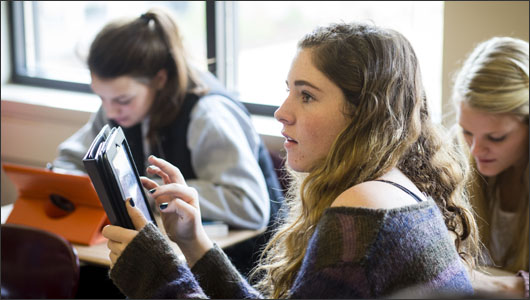In the relatively recent past, the over to educational season was stamped by a dash to Woolworths for activity books and coloring pencils. Today its not only the shop that is gone; books and pencils are joined by Chromebook laptops and tablet machines as instructive essentials.
The youngsters now entering school are completely fledged computerized locals. Late research by Ofcom found that six-year-olds have the same understanding of correspondences engineering as 45-year-olds, and a ‘thousand years era’ of 14- and 15-year-olds are the most tech-sharp in the UK.
In excess of four in 10 family units now have a tablet, implying that youngsters are getting to be machine proficient before they’ve even begun grade school – and we’ve all found out about the techno-babies who can deal with an ipad before they have learnt how to tie their own particular shoelaces.
It is obvious, in this way, that engineering is assuming an inexorably focal part in the classroom – not just in ICT lessons, where youngsters will begin figuring out how to compose code from the age of five in the not so distant future, yet in English, Maths and Science lessons also.
I as of late partook in an intuitive analysis run by Argos and Intel, which included sitting through two English lessons – one the way it was done in the good ‘ol days without any sort of engineering, and the second with all the most recent devices available to me.
The initially included perusing a scene from Shakespeare’s Macbeth, listening to the educator talk through the topics and after that composition my own particular investigation with pen and paper. The second included viewing an arrangement of feature cuts portraying contrasting translations of the overhang scene from Shakespeare’s Romeo and Juliet, utilizing the web to research the subjects, and afterward writing my own particular understanding on a smart phone.
While the first lesson obliged extreme and managed focus, the second was evidently additionally convincing. I’m not certain I learnt any more about Romeo and Juliet than I did about Macbeth, yet at no time amid the second lesson did I discover my psyche meandering, which is a large portion of the fight instructors battle consistently.

John Lewis directed a comparable trial, utilizing ipads and an intuitive smartboard to show a maths lesson. An arrangement of web-empowered applications were utilized to show the class about the region and volume of shapes, permitting them to pivot advanced 3d models on their screens and partition them into pieces.
As a student, I was likewise ready to participate in tests and submit my answers digitally. The educator was then equipped to draw up individual understudies’ answers on the smartboard and demonstrate to them to whatever remains of the class.
Any individual who has been through a more conventional instruction framework may discover these procedures gimmicky, yet numerous educators now assert that showy mixed media lessons are the best way to captivate youngsters whose capacity to ingest data has been molded by persistent introduction to innovation from an adolescent age.
Utilizing innovation within an instructive environment not just better reflects kids’ life outside the classroom, additionally permits them to sharpen their advanced aptitudes in a manner that will keep on being significant all through their grown-up life.
“The utilization of portable advanced advances in the classroom may be to a great extent new to folks, however the profits might be immense,” said Drew Buddie, senior bad habit seat at Naace, the relationship for the UK’s training innovation group.
“It’s not about simply moving conventional lessons onto screens – its about permitting understudies to make utilization of their gadgets to genuinely upgrade their learning while giving educators better approaches to track singular accomplishment and customize lessons.”
